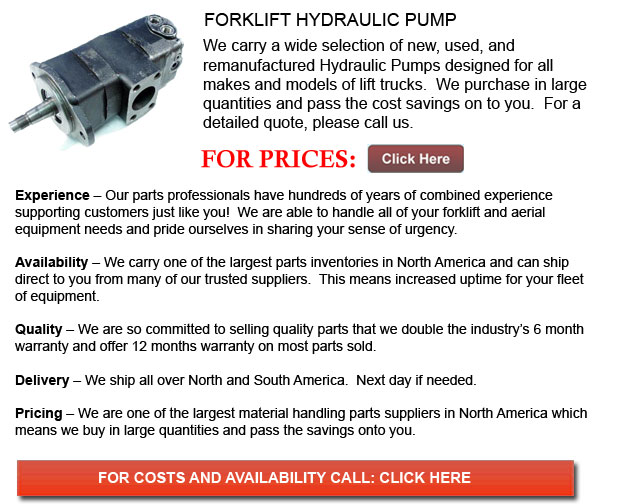
Usually used within hydraulic drive systems; hydraulic pumps could be either hydrostatic or hydrodynamic.
A hydrodynamic pump may also be considered a fixed displacement pump for the reason that the flow all through the pump for every pump rotation cannot be altered. Hydrodynamic pumps could likewise be variable displacement pumps. These types have a more complicated composition that means the displacement is capable of being adjusted. On the other hand, hydrostatic pumps are positive displacement pumps.
The majority of pumps are working in open systems. Normally, the pump draws oil from a reservoir at atmospheric pressure. In order for this particular method to run smoothly, it is essential that there are no cavitations taking place at the suction side of the pump. So as to enable this to function right, the connection of the suction side of the pump is bigger in diameter as opposed to the connection of the pressure side. Where multi pump assemblies are concerned, the suction connection of the pump is normally combined. A common choice is to have free flow to the pump, meaning the pressure at the pump inlet is a minimum of 0.8 bars and the body of the pump is frequently in open connection with the suction portion of the pump.
In a closed system, it is acceptable for there to be high pressure on both sides of the pump. Frequently, in closed systems, the reservoir is pressurized with 6-20 bars of boost pressure. In the case of closed loop systems, normally axial piston pumps are utilized. Because both sides are pressurized, the pump body needs a different leakage connection.
 Click to Download the pdf
Click to Download the pdf
Forklift Parts
Alternators
An alternator is actually a machine which converts mechanical energy into electric energy. This is done in the form of an electrical current. In essence, an AC electrical generator could be referred to as an alternator. The word normally refers to a small, rotating device driven by automotive and different internal combustion engines. Alternators which are situated in power stations...
More
Brakes
A brake wherein the friction is provided by a set of brake pads or brake shoes which press against a rotating drum unit referred to as a brake drum. There are a few specific differences between brake drum kinds. A "brake drum" is usually the explanation provided if shoes press on the interior exterior of the drum. A "clasp brake"...
More
Carriage Rollers
Carriage rollers are particularly designed bearings which are utilized on lift masts to be able to help them function within difficult environmental conditions. Lift masts are frequently subjected to oscillations, shocks, vibrations and high dynamic and static loads. This apparatus is frequently exposed to environmental influences such as heat, dust, cold, contamination, aggressive ambient air and moisture. Thus, the guidance...
More
Carriages and Carriage Parts
Rated by the fork carriage lifting capability, there are actually four sizes of hook type blade carriages. The hook type tine carriages have been standardized.
The carriage bar spacing utilized for Class 1 is approximately thirteen inches and the Class 1 carriage is rated to hold loads as much as 2000lbs. The Class 2 carriage is rated to hold cargo...
More
Control Valves
Automatic control systems were first created more than two thousand years ago. The ancient water clock of Ktesibios in Alexandria Egypt dating to the third century B.C. is believed to be the very first feedback control equipment on record. This particular clock kept time by means of regulating the water level in a vessel and the water flow from the...
More
Controllers
Lift trucks are accessible in different load capacities and several units. Most lift trucks in a regular warehouse situation have load capacities between one to five tons. Bigger scale models are utilized for heavier loads, like loading shipping containers, could have up to 50 tons lift capacity.
The operator could utilize a control to lower and raise the blades, which...
More
Differentials
A mechanical device which can transmit rotation and torque via three shafts is known as a differential. Every now and then but not at all times the differential would utilize gears and will function in two ways: in vehicles, it provides two outputs and receives one input. The other way a differential operates is to combine two inputs in order...
More
Drive Axles
A lift truck drive axle is actually a piece of machinery which is elastically affixed to a vehicle frame with a lift mast. The lift mast is connected to the drive axle and is capable of being inclined round the drive axle's axial centerline. This is accomplished by no less than one tilting cylinder. Forward bearing parts along with back...
More


![]() Click to Download the pdf
Click to Download the pdf











